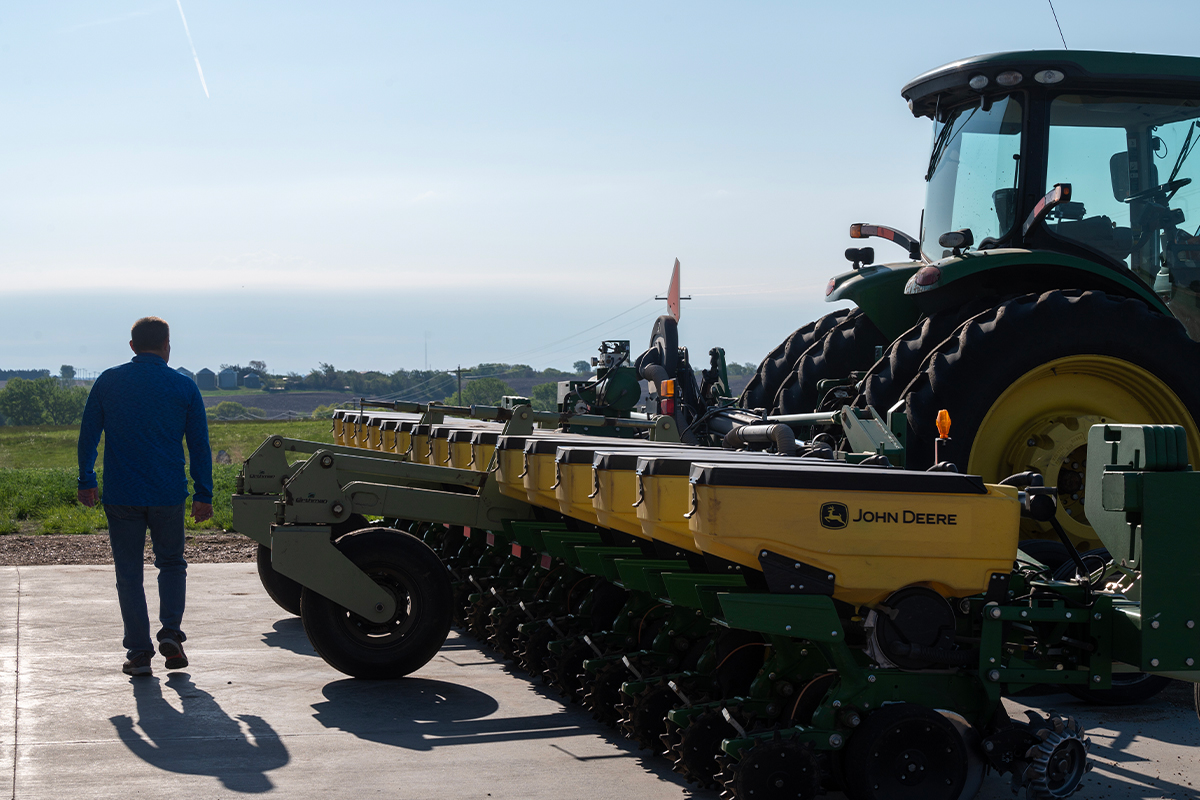Five Tips to Keep in Mind During Planting

As planters begin to roll across the country’s warmer regions, many farmers are finding themselves with excess cab time or weather delays, perfect for top-of-mind research or topical refreshers conducive to creating a career-best growing season. The checkoff has rounded up the following five topics to help inform your 2023 growing season.
1. Weed Management
Successful weed management is knowing when weeds grow and pollinate and stopping them before they go to seed. Recognizing weed strengths and exploiting their weaknesses will help mitigation efforts.
Identifying weeds can be difficult. Knowing how to control them is equally challenging. USB and its Take Action resources have simplified weed identification and control. Farmers can reference Take Action as they plan and implement weed management programs.
2. Nutrient Management
Optimizing a fertility management program begins with regular soil testing. Soil testing is a valuable and inexpensive tool for determining the nutrient and phosphorus status of a particular field. It also provides necessary information to make good decisions on nutrient inputs.
The Soybean Research & Information Network is a trusted source for information that can assist farmers with nutrient management needs. Understanding soil needs is key to addressing problems quickly.
3. Quick-Reference Experts
Unforeseen issues can happen and often occur at the least convenient times, but what happens when a farmer finds themself in a pinch, quickly trying to find information on an in-field problem?
The checkoff works with experts, from university researchers and extension specialists to technical advisors at major agrochemical companies, to develop resources farmers can access in the truck — or on the phone — and use while in the field. These resources can be searched quickly and saved for quick reference when farmers need information fast.
Take Action is a farmer-focused education platform dedicated to help manage herbicide, fungicide and insect resistance. Take Action provides research-based resources and tools that help farmers adopt management practices that lessen the impacts of resistant pests while preserving crop protection technologies.
The Soybean Cyst Nematode Coalition offers management resources and downloadable tools to combat the evolving threat from soybean cyst nematodes. The SCN Coalition is a diverse group of university researchers, extension specialists and ag industry representatives supported by a variety of industry organizations, including the soy checkoff.
Crop Protection Network provides publications, resources and training opportunities for farmers and ag professionals to inform row crop management decisions. CPN, with support from the soy checkoff, enhances access and use of agricultural extension recommendations while providing important soybean crop protection information.
4. Localized Expertise
Local and regional knowledge is critical to understand. What works best in your area or what new ideas have worked well? Things like:
- You may want to work with your local seed sales representative, ag extension agent, or agronomist to learn what new research results have been in your area.
- Pest thresholds reached in one field and not others. What factors caused that, and could anything be done to address that or be better prepared to trigger a control spray next season?
- Can you try to lock in your fertilizer buy earlier to capitalize on a lower price if that occurs? Fertilizer prices have been coming down after the dramatic rise in 2021.
- Does a piece of necessary equipment need upgrading or replacing before next planting season?
- The soy checkoff supports a wide range of regional research through extension programs. Stay in touch with local extension personnel. Many of them conduct annual official variety trials. Trial results could help make more informed decisions about early planted crops and assist in selecting varieties that are early maturing.
5. Safety First
Farm safety starts with education and awareness of potential areas of danger on the farm — from dust to operating machinery on the roadway.
U.S. grain dust bin explosion incidents increased in 2022. The annual summary of nationwide explosions, collected by Purdue University, reported nine incidents in 2022. The dust explosions occurred in seven different states, with two in Arkansas and Louisiana and one in New Mexico, Illinois, Iowa, Kansas and Ohio. This compares to seven reported incidents in 2021 and a 10-year average of 7.8 explosions annually.
Moving large, slow-moving machinery from field to field can be dangerous. Always be aware of your surroundings and watch out for distracted drivers, taking nothing for granted. A popular online tool was developed in collaboration with the Maryland Soybean Board and can be referenced here.
Planting windows are never assured, and no two years are the same. Some planting seasons are too wet, while others are ready for planting early. That said, the pressure is on when conditions are favorable, but pushing quickness over safety can have disastrous consequences.
Planting time is a fast-paced time, and we hope these topics will help as you prepare for a great growing season.



